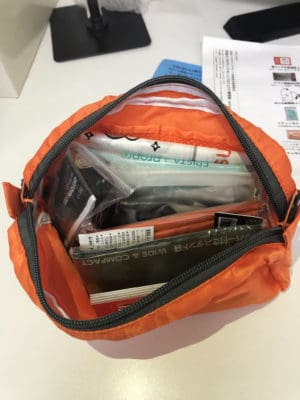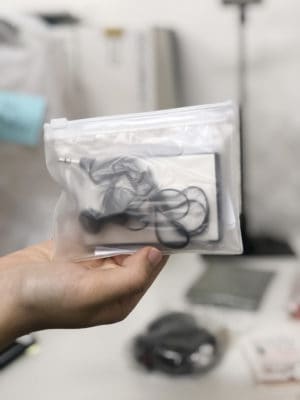
When you first think of Japan you’re probably thinking of all the pop culture references that originated from here like Pokemon, Naruto, Doraemon, etc. Or perhaps, you’re thinking of all the convenience stores, the amazing ramen, and Shibuya crossing. But when you’re dwelling on the subject of Japan, the common occurrences of earthquakes has probably crossed your mind- or maybe this is news to you. It’s been said that a tremor occurs in Japan at least every five minutes. Each year there are around 2000 quakes that can be felt by people. You may remember one of Japan’s biggest earthquakes happened in 2011, with a 9.0 earthquake triggering a tsunami.
Jioh and I (Lena) arrived in Japan about a month ago and already we experienced around 5 to 9 earthquakes. People say that this is a common occurrence and most locals aren’t really fazed by it, but I don’t know about you, but red alarms are going in my head. So naturally, as foreigners paranoid and unfamiliar to the land of Japan, we (or rather, Jioh) bought an earthquake kit in order to prepare for the worst yet to come.
The earthquake kit that was bought was around 7,300 yen (including tax) at Tokyu Hands near the Tokyo Station. Make sure to check if the Tokyu Hands you’re going to has it in stock because not all stores carry it! This can be a bit pricy, but later in the article, we can show you alternatives or DIY options as well.

How to Earthquake-Proof Your Home
Earthquake Tape

Heavy furniture or electronic equipment can move around and can injure you in case of big earthquakes. Use earthquake tapes to stick the heavy furniture to the walls of your house to protect yourself and prevent any furniture from falling down.
Earthquake Tension Pole

You can also pin down large furniture and others by using screws. If you want a less permanent way of securing your things, you can also use tension rods.
Latches
During earthquakes, cabinet doors and drawers can open and swing around, causing items behinds the doors like glass, dishes, etc fall out, break and even fly at you. An easy solution is to buy temporary latches to safely secure the doors together and prevent anything from cutting your head off.
Rearrange Items- but not for Feng Shui
It’s kind of like common sense: heavy items will cause more injury from higher locations. Make sure to revamp objects in your house and put heavier items on lower shelves. Avoid putting mirrors, framed photos or art above your bed or any other place you’re hanging around often.
How to Make Your Own Emergency Kit
It is a common and general rule of thumb to store at least three days worth of supplies to ensure your survival. With that being said:
Emergency Food

Most emergency food can be stored for several years. It ranges from canned bread, retort pouch food and cup noodles. 19th November is ‘Food Saving Day’ in Tokyo, so people can stock emergency food over the years, in preparation for disasters.
Headlights / Whistles

In case of a blackout, you will need to use headlights or flashlights to make your way around. If you are trapped or need any help, you should use whistles to alert those around where you are.
Water Bag

Include at least 1 gallon/ 4 liters of water per person, per day for drinking and sanitation.
Disaster / Survival Guidebook

When earthquakes or disasters happen, most people are likely to panic. However, it is very important to stay calm and follow the survival guideline in order to protect not only yourself but others as well. Tokyo Bousai has a disaster preparation and survival guide in Japanese, English, Mandarin, and Korean. Download the guide here (English version) and read it well, so you won’t get fearful and anxious in times of disasters.
Extra Batteries
Who knows whether the batteries you buy are faulty- or you’ve used up all of the power. It’s better to be safe than sorry, and pack extra batteries for flashlights, radio, and any other appliances.
First Aid Kit
In times of disasters, comes injuries.
Copies of Important Documents, Family and Emergency Contact Info
119 is for emergencies or quick-response care while 110 is to call the police to report crimes and accidents. You can’t speak Japanese? Don’t worry. Call Japanese Helpline at 0120 461 997, which they offer 24/7 English-language emergency services assistance. It’s important to have critical identification documents to prepare for the worst. Don’t forget about any medical information on top of financial and legal documents.
Garbage Bags, Wet Wipes, etc.
For personal sanitation. Just because you need to frugal during an emergency, doesn’t mean you have to live completely like a caveman.
Additional Emergency Supplies
These can range depending on the person and family, but make sure to include these items if needed:
-
-
- Prescription medicine
- Nonprescription medicine
- Glasses and contact lens solution
- Pet food + extra water
- Feminine supplies
- Books, games, etc for children or adults alike
- Supplies for baby
-
Earthquake Kit (7,344 JPY)



The emergency kit we got contains these items in the bag:
-
-
- Guidebook/instruction manual on how to use the items
- Whistle
- Emergency blanket (can retain 90 something % body heat)
- Portable toilet
- Portable radio
- Wet wipes
- Headlight
- Large handkerchief (to be used for either stopping blood, etc)
-
If you’re paranoid like us, make sure to get an emergency kit as soon as possible. If a disaster occurs, there might not be any left in stock – or you’ll be unable to go out to get one in the first place.
1. Headlight

2. Large Handkerchief

The large handkerchief can be used to cover your nose and mouth to prevent you from inhaling toxic gas or smoke. Also, it can be used to cover your head when evacuating.
3. Whistle

4. Emergency Blanket

5. Wet Wipes

6. Radio

This is a battery-powered radio that will work even if there’s a power failure. You have to gather correct information about disasters and your evacuation from radio or public authorities, not other people or fake news online.
7. Portable Toilet

8. Instructions

9. Disaster Guidebook

This blog post was written by Jioh and Lena, Seibo Japan/Mobal Japan’s interns from South Korea and Texas.
To see what else they’ve been up to, click on this link: Jioh and Lena



